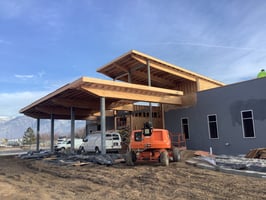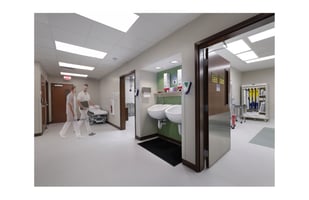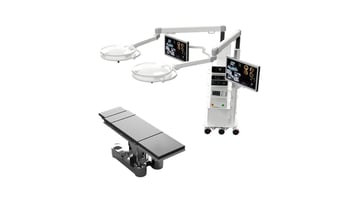In the complex process of ambulatory healthcare facility design and construction, construction...
Designing Medical Interiors with a Homey Touch
Creating comforting environments to promote ease has become an increasingly more common goal among healthcare providers. In fact, several of our clients have asked us to create a more ‘homey’ feel in their medical spaces as the sense of ‘home’ usually evokes the essence of comfort. Among the many benefits to this approach, providers report reduced anxiety for facility users and quicker recovery times for patients. The response has been moving away from institutional details toward a harmonious blend of materials, finishes, furnishings, artwork, lighting, sound, and sometimes aromatics.

Personalized touches such as uplifting photos and artwork, inspirational quotes, or calming music can seep in confidence and reassure patients’ will to recover. Make sure to display only positive visuals and programs if the facility has TVs/monitors.
Private recovery areas, personal attention from staff, and family-friendly waiting areas may further contribute to the homey feel. Amenities might include a fire place or easy chairs to create the feel of a living room or den. In pediatrics settings a play room with children’s toys and games might be appealing.

Warm, soft lighting fixtures such as recessed lights, wall sconces, and table lamps create a cozy ambiance. Avoid harsh fluorescent lighting, which can feel institutional.
Aromatherapy in minimal amounts may be another way to foster sensory relaxation. Studies have shown that pleasant aromas in the medical setting may help in reducing stress levels. Common scents used in healthcare settings are lavender, chamomile, eucalyptus, and peppermint.
Bring in elements of nature such as potted plants, flowers, landscape images, and natural wood accents to add warmth and tranquility to the space. Consider placing large windows where appropriate to allow natural light to filter in.

Wood finishes, warm colors, and soft materials are some ways to ease the distress in a medical center. This does not necessarily suggest a total avoidance of ‘cold’ and ‘hard’ materials as they could represent a look that the user desires, or could act as a complement to the warm materials. Here, the designers’ challenge of creating an inviting presence in an institutional setting can be done by balancing materials like metal and concrete with plush furniture, cushions, carpets or rugs, ambient lighting, warm colors, and plants.
By incorporating these comforting, even ‘homey’ interior elements into the ambulatory setting, patients and staff may feel more relaxed and supported throughout their experience, contributing to a positive overall healing environment.





